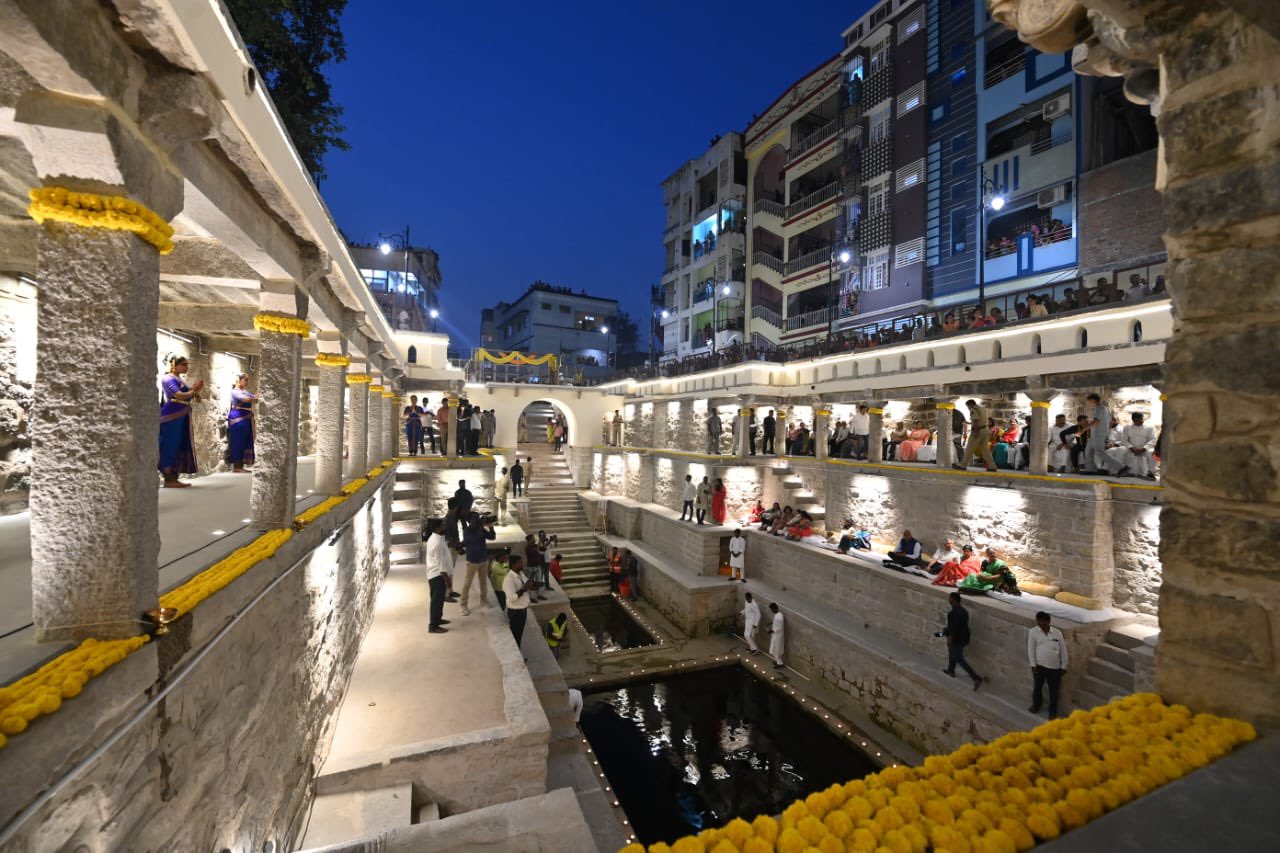South First speaks to water conservationists on the importance of restoring neglected stepwells and their benefits to society.

The recently restored 17th-century Bansilalpet stepwell in Hyderabad has put the focus on the city’s traditional waterbodies.
Last year, the stepwells at Bapughat in Langar Houz and the Gachibowli were rejuvenated. The state government has plans to restore 20 heritage stepwells in the city.
Locally known as baolis, most of these deep wells had turned into dumping yards over the years with tonnes of debris piling up in them.
On 6 December, the Telangana government pledged to restore at least 10 other such stepwells in the next four months.
South First spoke to water conservationists on the importance of restoring these long-neglected stepwells and their benefits to society.
Kalpana Ramesh, the founder of the Hyderabad-based Rainwater Project who helped in restoring the stepwell, said several people suggested her to convert the Bansilalpet stepwell into a different structure.
“They told me that it can be turned into a community hall, and part of it can be converted into a parking space or cow shelter,” she told South First.
She, however, opined that people need to realise that such structures are integral to preventing flooding in urban areas.
“We are blessed with rainfall but why are we not putting it back into the ground? We do not need it from rivers. Such stepwells are big sources of water and can avoid urban flooding as they have a huge holding capacity,” she pointed out.
It may be noted that several cities in South India — Chennai, Kochi, Hyderabad and Bengaluru — witnessed floods during the past decade.
Noting that climate change has been causing copious amount of rainfall within a brief period, she said, “Every time it rains, we see roads getting flooded in five minutes. So such structures could hold water during heavy rainfall. This stepwell being in the upper catchment of the Hussain Sagar Lake can hold up to 22 lakh litres of water.”
Telangana reportedly has several thousands of stepwells, with Hyderabad having hundreds of such waterbodies in private and public properties, temples, and mosques.
The Bansilalpet stepwell was the ninth and the largest well in Hyderabad.
Besides holding water throughout the year, these wells also play an important role in recharging groundwater.
Natasha Ramarathanam, a member of a city-based collective, Nature Lovers of Hyderabad, termed it an ancient method of rainwater harvesting.
“The city streets get flooded as lakes have been encroached upon. With these restored stepwells, rainwater can drain into them instead of remaining stagnant and eventually evaporating. This recharges the groundwater levels,” she told South First.
Drawing attention to the Bansilalpet stepwell, Kalpana said, “The channels collect water that flows onto the road, drains through large pits we have built. The pits are connected to an aquifer (a body of saturated rock through which water can easily move) of the well.”
Venugopal Vippulancha, President of the Gandipet Welfare Society (GWS), which majorly funded the Bansilalpet stepwell restoration works, noted that a lot of science and technology has gone into the construction of the stepwells.
“These wells are constructed in such a way that they will always act as feeders, conserve water and never run dry. It is a continuous cycle,” he told South First.
The local communities were traditionally dependent on the stepwell for their daily needs.
“People in ancient times used the water from the stepwell for drinking, bathing and washing purposes.”
“Even 30-35 years ago, people used to wash clothes, draw water using ropes and buckets, and celebrate festivals like Bathukamma, Bonalu, and Ramazan here. Some people even used to swim here,” Hajira aka Sheema, a resident of Bansilalpet in Hyderabad had earlier told South First adding that the water was clean then.
The stepwells had also hosted religious gatherings and community meetings.
Natasha noted that stepwells are a good way for the younger generation to connect with their past. “Instead of visiting the air-conditioned malls, they can go to these waterbodies. Galleries, such as one at Bansilalpet, will give a glimpse of the life 100 years ago.”
Kalpana felt the renovation of a stepwell also helps in improving the socio-economic status of the community.
“The property value will go up automatically. The economy of shops will get a boost as the well becomes a tourist
attraction,” she said.
Natasha observed that the renovation of such structures instils a sense of ownership among people and they should demand the restoration of more stepwells.
“On my way to the Bansilalpet stepwell, I asked a person for direction and I sensed great pride in him while he guided me. If you ask the elders in Hyderabad, they will tell anecdotes of houses having wells. These baolis are a landmark for them to celebrate festivals and hold other gatherings,” she explained.
Referring to the Bansilalpet stepwell restoration, she added that it also helped in clearing tonnes of plastic that had been dumped there.

May 03, 2024

May 03, 2024

May 03, 2024

May 03, 2024

May 03, 2024

May 02, 2024